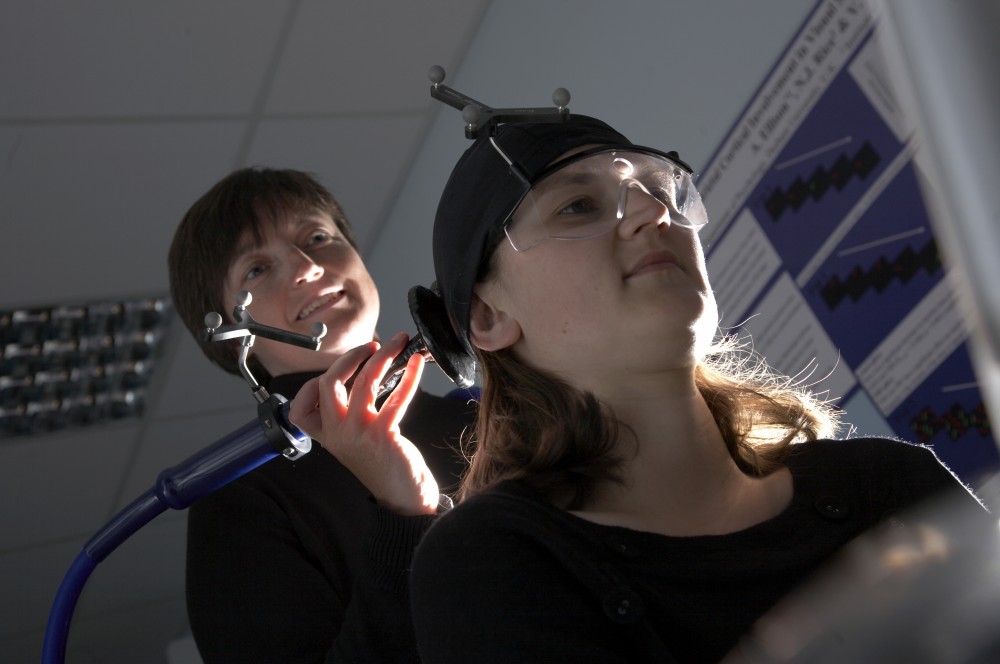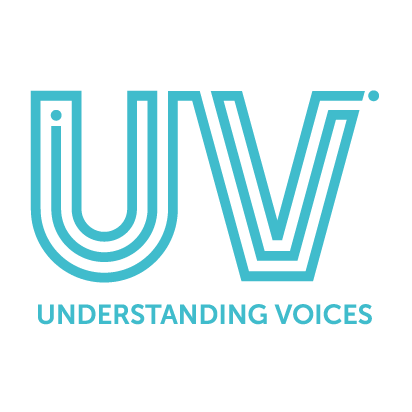What is neurostimulation?
Neurostimulation refers to a group of techniques used by neuroscientists to change brain activity, either by using electromagnetic pulses or a weak electrical current applied to the scalp. The idea is that voices might be due to over-activity in some areas (or networks of areas) in the brain, and that decreasing this over-activity might reduce the frequency of voices.
Neurostimulation is not the same as electro-shock therapy. The types of neurostimulation that have been tested as a therapy for distressing voices are called ‘noninvasive’, because they are applied through the scalp, and do not require anything like surgery for the stimulation to reach the brain. They are not unpleasant to receive and involve very minimal side-effects (mild headaches that quickly go away, and perhaps some facial twitching during application).
The goal of neurostimulation for distressing voices is ultimately to reduce how often voices occur, and therefore how distressed the person is.

Different types of neurostimulation
There are two main types of noninvasive neurostimulation: transcranial magnetic stimulation (TMS) and transcranial direct current stimulation (tDCMS).
TMS uses quickly changing magnetic fields to create an electrical current in a very small area of the brain. It involves a ‘coil’ being held against the scalp for the duration of stimulation and feels a bit like someone is gently tapping on the scalp while it is applied.
tDCS is different to TMS in that it involves two small electrodes being placed on the scalp during stimulation, with a very weak electrical current (about 1 milliamp) being run between these electrodes. People often describe the feeling as being ‘itchy’ or sometimes ‘prickly’ underneath the electrodes.
Previous trials have aimed stimulation at a region of the brain called the temporoparietal junction, in the left hemisphere. To reach this area, stimulation is applied just above and behind the ear. We know this brain area is strongly connected to lots of other brain areas that play important roles in language, and neuroimaging studies have shown that these areas tend to be active while people report hearing voices.
Is it available?
Neurostimulation as a therapy is not currently available in the UK outside clinical trials and is not currently licensed for the treatment of psychosis outside specific scientific studies. As we have seen, it is not clear quite how effective neurostimulation really is for reducing the frequency of voices, and much more work needs to be done to test this.
Find out more
Read
Peter Moseley (2012). Is TMS a good treatment option for those seek help with voice hearing? Hearing the Voice project blog.
Peter Moseley (2016). Transcranial direct current stimulation – over-hyped or under-studied? Hearing the Voice project blog.
Peter Moseley et al (2016). Non-invasive brain stimulation and auditory verbal hallucinations: new techniques and future directions. Frontiers in Neuroscience.
